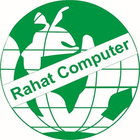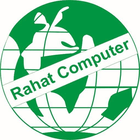Guide To Building A Powerful Desktop For Programming

Are you tired of your slow, outdated desktop hindering your programming potential? Look no further, as we have the ultimate guide to building a powerful desktop for programming. Whether you’re a seasoned coder or just starting out, having the right hardware is crucial to unleashing your full programming potential. In this article, we’ll explore the essential components and step-by-step process to help you build a desktop that can handle even the most demanding coding tasks. Say goodbye to lag and hello to seamless programming with our comprehensive guide.
Related: Buy Best Desktops in Oman
Choosing the Right Processor: Maximizing Performance for Programming
One of the most critical components when building a powerful desktop for programming is choosing the right processor. A well-equipped processor can significantly enhance the performance of your programming tasks, making your workflow more efficient and productive. To maximize performance, it is essential to consider several factors when selecting a processor.
1. Clock Speed: The clock speed of a processor determines how quickly it can execute instructions. A higher clock speed means faster processing, which is advantageous for tasks that require quick calculations and data manipulation. When choosing a processor, look for models with higher clock speeds to ensure smooth and speedy execution of your programming projects.
2. Number of Cores: Cores are the individual processing units within a processor. Multiple cores allow for simultaneous multitasking, which is particularly beneficial for programming tasks that involve running multiple applications or executing multiple threads. Opt for processors with a higher number of cores to handle complex programming tasks more efficiently.
3. Cache Size: The cache memory in a processor stores frequently accessed data, reducing the time it takes to fetch information from the main memory. A larger cache size enables faster access to data, leading to improved performance. Consider processors with larger cache sizes to minimize latency and enhance the speed of your programming tasks.
4. Hyper-Threading Technology: Hyper-Threading is a feature in some processors that allows each core to handle multiple tasks simultaneously. With Hyper-Threading, a quad-core processor, for example, can behave like an eight-core processor, effectively doubling its multitasking capabilities. Look for processors with Hyper-Threading technology to maximize the efficiency of your programming workflow.
In addition to these factors, it is crucial to ensure compatibility between the processor and other components of your desktop, such as the motherboard and RAM. Research and compare different processor models to find the perfect balance of clock speed, number of cores, cache size, and other features that align with your programming needs. By selecting the right processor, you can create a powerful desktop that will significantly enhance your programming performance.
Related: Buy Best Desktops in Oman
Selecting the Ideal RAM Configuration: Enhancing Speed and Efficiency
RAM, or Random Access Memory, is a crucial component in building a powerful desktop for programming. It plays a significant role in enhancing the speed and efficiency of your system, allowing you to work seamlessly without any lag or delays. Choosing the ideal RAM configuration can greatly impact your programming experience, so it’s essential to understand the different options available and select the one that best suits your needs.
1. Consider the Capacity:
When selecting the ideal RAM configuration, the first factor to consider is the capacity. The capacity of RAM determines how much data your system can store and access at any given time. For programming purposes, it’s recommended to opt for a higher capacity RAM to accommodate the resource-intensive tasks associated with coding and development. A minimum of 8GB is often considered sufficient, but if you work with complex applications or multitask frequently, you might benefit from 16GB or even 32GB of RAM.
2. Focus on Speed and Frequency:
In addition to capacity, the speed and frequency of RAM also play a crucial role in enhancing your desktop’s performance. RAM speed is measured in megahertz (MHz) and determines how quickly data can be read from or written to the memory. Higher RAM speed translates to faster data transfer, resulting in snappier program execution. When selecting RAM, look for modules with higher MHz ratings for a noticeable boost in speed. Additionally, pay attention to the RAM’s frequency, as it should match the specifications supported by your motherboard to ensure compatibility and optimal performance.
To further enhance your understanding of RAM configurations, let’s take a look at a comparison table showcasing the different options available:
| RAM Capacity | RAM Speed (MHz) | Recommended Usage |
|---|---|---|
| 8GB | 2666 | Entry-level programming, light multitasking |
| 16GB | 3200 | Mid-level programming, moderate multitasking |
| 32GB | 3600 | Advanced programming, heavy multitasking |
Remember, selecting the ideal RAM configuration is essential for a powerful programming desktop. By considering factors such as capacity, speed, and frequency, you can ensure a smooth and efficient coding experience, enabling you to focus on what matters most – writing exceptional code.
Picking the Perfect Storage Solution: Balancing Capacity and Speed
When it comes to building a powerful desktop for programming, one of the most important considerations is choosing the right storage solution. Balancing capacity and speed is crucial to ensure smooth and efficient performance.
Capacity: The first thing to consider is the amount of storage space you need to accommodate all your programming files, applications, and databases. As a programmer, you’ll likely be dealing with large files and multiple projects, so having ample storage capacity is essential. Opting for a solid-state drive (SSD) with a higher storage capacity, such as 1TB or more, will give you the freedom to store all your files without worrying about running out of space. Alternatively, you can also consider a combination of SSD and hard disk drive (HDD), where you use the SSD for faster access to frequently used files and the HDD for storing larger, less frequently accessed files.
Speed: In addition to capacity, the speed of your storage solution plays a crucial role in the overall performance of your programming desktop. SSDs are known for their lightning-fast read and write speeds, making them ideal for programming tasks that involve frequent file access and compilation. However, if budget constraints are a concern, you can also opt for a hybrid storage solution that combines the speed of an SSD with the larger capacity of an HDD. This way, you can store your operating system and frequently used files on the SSD for faster access, while using the HDD for storing larger files and archives.
Whether you choose an SSD, HDD, or a combination of both, finding the right balance between capacity and speed will ensure that your programming desktop performs optimally, allowing you to code efficiently and smoothly.
Optimizing Graphics Capability: Ensuring Smooth Multitasking and Visualization
In the world of programming, having a powerful desktop is essential for smooth multitasking and visualization. Whether you’re a beginner or an experienced programmer, optimizing your graphics capability can greatly enhance your coding experience.
1. Choose the right graphics card: When it comes to programming, a powerful graphics card can make all the difference. Look for a card with ample VRAM and a high core clock speed to handle complex visualizations and rendering tasks with ease. Popular choices include NVIDIA GeForce and AMD Radeon cards.
2. Utilize multiple monitors: Multitasking is a breeze when you have multiple monitors set up. You can have your code editor open on one screen, documentation or reference materials on another, and still have room for a web browser or terminal window. This setup allows for seamless switching between tasks, increasing productivity and efficiency.
3. Optimize your code editor: Your code editor is where the magic happens, so make sure it’s optimized for performance. Choose a lightweight and efficient editor like Visual Studio Code or Sublime Text. Customize the settings to match your workflow and enable features like syntax highlighting, code folding, and auto-completion to streamline your coding process.
4. Consider a high-resolution display: A high-resolution display can greatly improve your programming experience. It allows you to see more lines of code at once, reducing the need for excessive scrolling. Look for a display with at least 1080p resolution and consider going for 4K if your budget allows.
5. Upgrade your RAM: Programming often involves running multiple applications and services simultaneously. Upgrading your RAM can prevent slowdowns and ensure smooth multitasking. Aim for at least 16GB of RAM, but consider going higher if you frequently work with resource-intensive tasks or virtualization.
By optimizing your graphics capability, you can create a powerful desktop that caters specifically to your programming needs. With the right hardware and software setup, you’ll be able to tackle complex projects with ease and enjoy a seamless coding experience.
In Retrospect
In conclusion, building a powerful desktop for programming can greatly enhance your coding experience and productivity. By carefully selecting the right components and following the tips outlined in this guide, you can create a machine that is tailored to meet your specific programming needs. Whether you’re a beginner or an experienced developer, investing in a high-quality desktop setup can make a world of difference in your programming journey. So, roll up your sleeves, research the best components, and get ready to build the desktop of your dreams. Happy coding!



